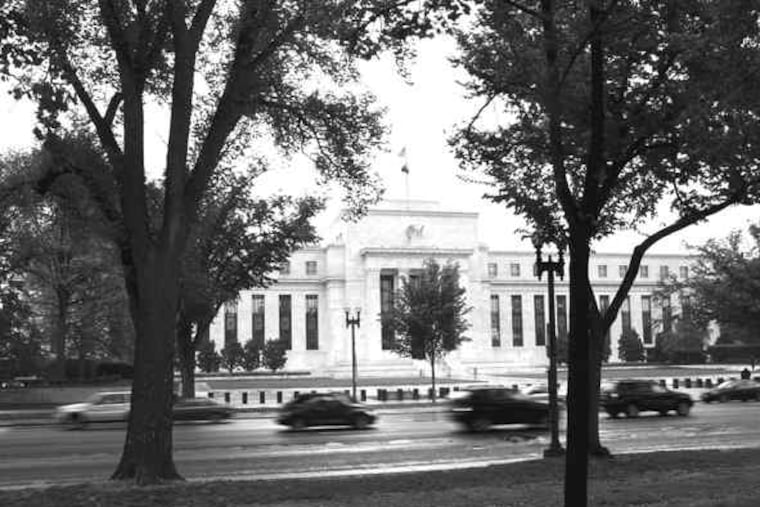PhillyDeals: Both sides float goals to regulate financial structure
President Obama is supposed to lay out plans to "modernize" the way America regulates its out-of-control financial system. What he's not expected to do is to smash the rodent colony of federal and state agencies that lacked the power, despite many warnings, to diagnose or prevent the current financial crisis.

President Obama is supposed to lay out plans to "modernize" the way America regulates its out-of-control financial system.
What he's not expected to do is to smash the rodent colony of federal and state agencies that lacked the power, despite many warnings, to diagnose or prevent the current financial crisis.
Treasury Secretary Timothy Geithner and his mentor, economist Larry Summers, have already floated Obama's goals. They include the obvious:
Force banks to set more money aside for when things get bad - which happens every crisis.
Give the Federal Reserve more power over dangerously large companies and non-banks, like AIG - which it already has seized.
The incremental:
Set up a "Council of Regulators" so the main federal bank agencies and the many state agencies can "coordinate across the financial system."
Improve "consumer and investor protection."
And the way overdue:
Force banks that sell loans to speculators to report who is buying them, and to keep a piece of the loans, so there's less incentive to make stupid loans.
Set up a system for "the orderly resolution of any financial holding company" so "government is no longer forced to choose between bailouts and financial collapse."
Republicans have a counter-plan, which has a family resemblance to Obama's:
Set up a "Market Stability Board" that would work with the various financial regulators.
Audit and limit the powers of the Fed.
Make it easier for financial institutions to declare bankruptcy, instead of inviting government bailouts.
Gone is the late-George W. Bush-era proposal to replace the whole failed system with a powerful new agency.
As Obama said on CNBC late yesterday, "We want to get this thing passed, and, you know, we think that speed is important. We want to do it right. We want to do it carefully. But we don't want to tilt at windmills, we want to make sure that we're getting the best possible regulatory framework in place so that we're not repeating the mistakes of the past."
"There's been a lot of resistance to that from Republicans, from some Democrats, and from the banking industry," says David F. Scranton, a chairman of the financial services group at Stradley Ronon Stevens & Young L.L.P., Philadelphia.
So Washington and the banks win again? "I don't know that consolidating the regulators, by itself, is an end-all," Scranton told me. The president's rough proposal "addresses key issues. The real question is, how will it get implemented? What teeth will it have? Will the mechanism they adopt be effective?
"Whether you have one systemic risk regulator, or a council of regulators looking at systemic risk, the question is, are they going to have the motivation and the political muscle to do something about risk when they identify it?"
A key plan
Residents of Francisville - a slice of brick-rowhouse lower North Philly, from Fairmount Avenue up to Girard, from Broad Street west to Corinthian - are weighing competing developers' plans for a city-owned 1.5-acre triangle between North 19th, Wylie and Cameron Streets.
Last night at Second Pilgrim Baptist Church, 15th and Ogden Streets, residents heard the rivals:
Hankin Group, of suburban Exton, a proponent of the "New Urbanist" design school that likes "walkable" neighborhoods, proposes "up to 60 condos and up to 26 townhouses" for the site in partnership with Philadelphia-based Sam Sherman and Dale Group, according to Jim Fuller, vice president of planning and design at Hankin.
Onion Flats L.L.C., of Northern Liberties, proposes 70 units, plus a community garden, on the same ground. Co-owner Tim McDonald calls it "one of the most sustainable green projects in the country."
"It's a huge thing for this neighborhood," said Penelope Giles, executive director of Francisville Neighborhood Development Corp., which sponsored last night's meeting. "There hasn't been anything of this magnitude in 50 or 100 years."
Are residents worried poor and working people will be pushed out by new construction and higher prices? "We have quite a large amount of low-income housing already," Giles told me. "Our goal is to mix them up so we have low-income, high-end, and middle-working-class product to offer."
Residents will gather again at Second Pilgrim next week to comment and vote on which proposal they like better. Says Giles, "Councilman [Darrell] Clarke has assured me our input will be seriously considered."